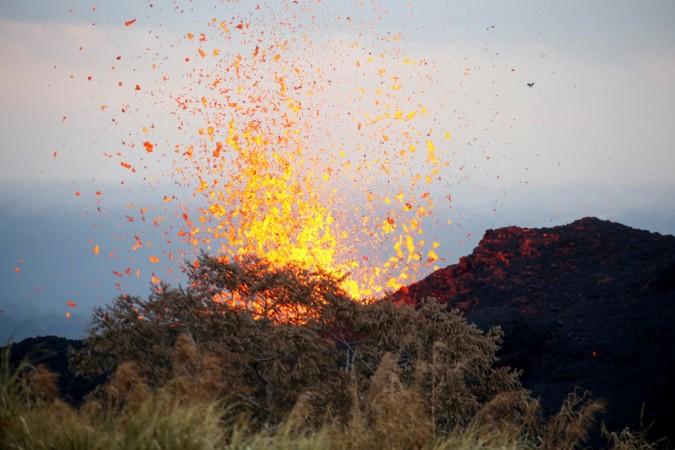
The Kilauea volcano that erupted over two weeks ago leaving a trail of destruction has now reached the ocean, prompting authorities in Hawaii to issue a 'laze' warning that can cause lung, eye and skin irritation.
The US Coast Guard enforced a Lava Entry Safety Zone on Sunday for the navigable waters around the volcano. A Coast Guard news release said the safety zone includes all waters extending about 300 meters around the entry of the lava flow.
For the Big Island residents -- first it was catastrophic lava, then sulphur dioxide and now laze -- a mashup of "lava" and "haze" -- a nasty product formed when hot lava hits the ocean, sending hydrochloric acid and volcanic glass particles into the air.
"This hot, corrosive gas mixture caused two deaths immediately adjacent to the coastal entry point in 2000, when seawater washed across recent and active lava flows," the Hawaiian Volcano Observatory said.
"All waterway users should be aware of the hazardous conditions associated with such an event. Getting too close to the lava can result in serious injury or death," said Lt Cmdr John Bannon, waterways management lead for the Coast Guard's Honolulu sector, CNN reported.
The lava crossed Highway 137 late on Saturday and entered the Pacific Ocean, the HVO said. It also reported sulphur dioxide emissions have tripled because of the lava hitting the waters.
The laze extends as far as 24 km west of where the lava gushed into the ocean on the island's southern coast. It was just offshore and running parallel to the coast, said US Geological Survey scientist Wendy Stovall.
Authorities warned that the plume could shift direction if the winds change, the Time reported.

















